12 Goofy Guns That Actually Exist

In the world of firearms design, for every iconic success like the 1911 or AR-15, there are dozens of odd, awkward, and sometimes downright bizarre creations that made it past the prototype stage. Whether victims of poor engineering, questionable ergonomics, or simply being too ahead of their time, these firearms represent the road less traveled in gun development.
From pistols that looked like revolvers but weren't, to shotguns that could kill their users, join us as we explore 12 of the goofiest guns that somehow made it into production. These aren't just engineering curiosities—they're reminders that innovation often requires walking the line between genius and madness.
Goofy Guns @TFB:
- Fudd Friday: Winchester 1911 SL - Was the "Widowmaker" Really Deadly?
- Fudd Friday: Stevens 325 - When Bolt Actions Met .30-30
- The Rimfire Report: Single Shot "Revolver" – The Savage 101 Story
- Rimfire Report: 1950s 22LR Barrelette Shotgun Adapter
- The Rimfire Report: Charter Arms Explorer II AR7 Pistol Review
1. Winchester Model 1911 SL – "The Widowmaker"
The Winchester Model 1911 SL earned the nickname "Widowmaker," though evidence suggests this reputation is more folklore than reality. This 12-gauge semi-auto shotgun emerged from a business dispute between Winchester and John Browning, who took his Auto-5 design to FN after Winchester refused to pay him royalties.
Winchester needed their own autoloader but had to dodge Browning's patents. T.C. Johnson's solution? Remove the charging handle entirely. Instead, users charged the weapon by grabbing a knurled portion of the barrel and pulling it straight back. Winchester recommended placing the stock against your hip or using your off-hand to hold the stock during this maneuver.
While awkward by today's standards, there's little historical evidence these guns actually killed users as the nickname suggests. The 1911 SL was produced from 1911 to 1925 with approximately 82,000 units manufactured before Winchester moved on to more conventional designs. It's a classic example of a solution creating new problems.
2. ZIP 22
If I were giving awards for "Most Ambitious Failure," the USFA ZIP 22 would win hands down. Released in 2013, this bizarre rectangular block of polymer looks more like a barcode scanner than a firearm.
Chambered in .22LR and compatible with Ruger 10/22 magazines, the ZIP 22 was a reliability nightmare. Users reported constant failures to feed, extract, and eject – sometimes all three in a single magazine! The design featured two trapezoidal bars extending from the front that you had to push toward yourself to cycle the action, effectively placing your hands uncomfortably close to the muzzle.
The ZIP's disastrous reliability contributed to USFA's bankruptcy in 2017. Some gun dealers refused to sell them in good conscience. If you come across one today selling for cheap, there's a good reason – they're basically functional paperweights with occasional shooting capability.
3. Charter Arms Explorer II
The Charter Arms Explorer II looks like someone chopped up a 10/22 rifle and grafted on a pistol grip. Released in 1980, this weird .22LR handgun retained much of the appearance of a rifle while being legally a pistol.
The Explorer II was essentially a pistol adaptation of the Charter Arms/Armalite AR-7 survival rifle. It featured a tubular appearance with an open-top receiver, a charging handle on the side, and standard rifle-style sights. The grip had fixed plastic panels, likely to prevent someone from attaching a stock and making it an illegal short-barreled rifle.
Charter Arms marketed the Explorer II as a plinker and small game hunting pistol, but it was heavy and bulky for what it offered. Despite being functional when properly maintained, its awkward appearance - looking like some one drew Han Solo’s blaster from memory, and handling limited its appeal. Production lasted until 1986, with the gun remaining a curiosity for collectors of unusual firearms.
4. Savage Model 101
The Savage Model 101 is the ultimate gun catfish – it looks like a Colt Single Action Army revolver, but surprise! It's actually a single-shot pistol with a fake cylinder.
Introduced in 1960, this Robert Hillberg design capitalized on America's fascination with Westerns. The barrel and "cylinder" are one conjoined piece with only a single chamber. To reload, you pivot the barrel assembly sideways, extract the spent case, and insert a fresh round. To complete the illusion, the faux cylinder features machined fake cartridge tips.
Savage marketed these .22LR pistols primarily to children and fathers teaching their sons to shoot – a concept that would give today's marketing departments cardiac arrest. Production ran until 1968, with approximately 54,000 units made. It's a fascinating example of style over substance that actually sold pretty well.
5. Calico Carbine
Nothing screams "1980s sci-fi prop" like the Calico with its bizarre top-mounted helical magazine. This distinct firearm features a cylindrical magazine that spirals cartridges around a central axis, allowing for an impressive 50 or 100-round capacity.
While innovative, the Calico system was the definition of finicky. The magazines were notoriously difficult to load, prone to jamming, and expensive to replace. The gun used a roller-delayed blowback system similar to H&K designs, but reliability remained an issue throughout its production.
Despite its problems, the Calico developed a cult following and made numerous appearances in movies like "Total Recall" and "Space Mutiny." Various models were produced in both pistol and carbine configurations, chambered in 9mm and .22LR. The company still exists today, though the gun never achieved mainstream success due to its complexity and unusual ergonomics.
6. Hamilton No. 27 Rifle
The Hamilton No. 27 was a rifle made by C.J. Hamilton & Son of Plymouth, Michigan. This was their most popular rifle model, manufactured from 1907 to 1930 with over half a million produced.
Clarence Hamilton, the founder of the Plymouth Iron Windmill Company around 1882, was also the designer of the Daisy BB gun. His company name was changed to Daisy Manufacturing in 1895, but he used a different company name for these rifles.
The Model 27 single-shot tip-up rifle was first made in 1906. These rifles were so common they were given away to folks who bought Plymouth windmills and were even sold in the Sears & Roebuck catalog.
The Hamilton Rifle Company was established in Plymouth, Michigan in 1898 by Clarence J. Hamilton and his son, Coello. They produced rifles until 1945, with the No. 27 being their most successful model. Despite their wide distribution in their day, they've become relatively obscure in modern firearms discussions, often overshadowed by the more famous Daisy BB guns that came from the same designer.
Over half a million were produced between 1907 and 1930, and they were sometimes given away as promotional items with bags of seed corn, earning the nickname "seed corn gun." It's a perfect example of how novelty sometimes trumps functionality in the gun market.
7. M4 Survival Rifle
The M4 Survival Rifle looks like something assembled from parts found in a hardware store – and that's not far from the design philosophy. Created after World War II as a survival tool for downed aircraft crews, this spartan .22 Hornet bolt-action rifle prioritized compact storage over comfort.
Manufactured by Harrington & Richardson, the M4 featured a 14-inch barrel that could be detached from the receiver, and a wire stock that folded for storage. The entire package collapsed to about 14 inches long and weighed only four pounds. The trigger guard was just a simple strip of metal, and the sights were rudimentary at best.
Interestingly, military-issue ammunition came with an explicit warning against using it on enemy personnel to comply with the Hague Convention against expanding bullets. The M4 was later replaced by the M6 Aircrew Survival Weapon, but it remains a fascinating example of minimalist firearm design.
8. Bushmaster Arm Pistol
The Bushmaster Arm Pistol exists in that awkward no-man's-land of being too big for a pistol but too small for a rifle. Developed in the early 1970s as a potential survival weapon for pilots, this oddball creation essentially shrunk an AR-15 down to pistol size.
Chambered in 5.56mm NATO, the Arm Pistol combined elements of the AR-15 with an AK-style long-stroke gas piston system. Some AR-15 parts were used in its construction, including the bolt and firing pin, and it accepted standard STANAG magazines.
Without a stock, the weapon was notoriously difficult to aim effectively, and the short barrel significantly reduced the 5.56mm round's ballistic performance. Only about 1,200-2,000 were manufactured before production ceased in 1991. Today, they're collectible curiosities that demonstrate how "compact" doesn't always mean "better."
9. Greener Police Shotgun
The Greener Police Shotgun wasn't just a firearm; it was a tool of colonial control with a fascinating twist. Designed for British colonial police forces in the early 20th century, particularly in China and Egypt, this single-shot shotgun featured a unique security system.
What made the Greener truly unusual was its proprietary ammunition system. Each shell required a special annular groove machined into its base that matched two lugs protruding from the breech. Without this groove, the action couldn't close. This prevented anyone who captured or stole the weapon from using it with standard, non-Greener, ammunition – effectively rendering it useless if it fell into the wrong hands.
Typically chambered in an unusual 14½ gauge (though later versions accepted 12 gauge), the Greener Police Shotgun represents a solution to a specific colonial problem. It's one of the few firearms designed intentionally with built-in limitations rather than expanded capabilities.
10. Boberg/Bond Arms Bullpup Pistol
The Boberg XR9-S (later sold as the Bond Arms Bullpup) took the concept of a bullpup design from rifles and shrunk it down to pistol size. Unlike conventional pistols that push cartridges forward from a magazine, this oddball pulled rounds backward before chambering them.
This reverse-feeding system allowed for a longer barrel in a compact package, theoretically improving ballistic performance. But it came with a major drawback – it couldn't reliably use all ammunition. The rearward pull would often separate bullets from casings with cheaper ammo, causing catastrophic failures.
Bond Arms acquired the design from Boberg in 2016 and made improvements to enhance reliability. The weapon features a rotating barrel locked breech and the backward-feeding mechanism positions the magazine under the barrel rather than behind the trigger as in most pistols. Despite its complexity and ammunition pickiness, Bond Arms continues to produce the Bullpup9, finding a niche market among shooters who appreciate its innovative approach and unique engineering.
11. Ljutic Space Gun
The Ljutic Space Gun isn't called that because of some sci-fi marketing gimmick – it's literally what creator Al Ljutic named it because it looks like something from another planet.
Designed specifically for competitive trap shooting, this single-shot 12-gauge features a dramatically offset stock and bizarre geometric receiver that would look more at home in Star Trek than on a shooting range. But the weird appearance served a purpose – the inline design kept the barrel aligned with the shooter's eye while directing recoil at a downward angle for better control.
Only about 200 Space Guns were ever manufactured, with Ljutic later focusing on his more conventional (but still excellent) Mono-Gun design. Despite its alien appearance, the Space Gun was highly regarded for its performance. It's a rare case where a gun looks genuinely bizarre but performs exceptionally well exactly because of its unusual design.
12. High Standard Model 10
The High Standard Model 10 looks like what would happen if a shotgun and a goldfish had a baby. Developed in the late 1950s by police sergeant Alfred Crouch, this gas-operated semi-auto shotgun used a bullpup configuration decades before it became trendy.
Available in two models (the 10A with an integrated flashlight and the 10B with a mount for a detachable light), the boxy, rectangular design was intended for police tactical units. It featured a rotatable shoulder stock and could only be fired from the right shoulder due to aggressive right-side ejection – the gun literally had a warning saying "CAUTION - DO NOT SHOOT FROM LEFT SHOULDER."
Despite its futuristic appearance for the era, the Model 10 suffered from reliability issues, awkward controls, and a rough trigger pull. Few police departments adopted it, and those that did quickly replaced it. It stands as an ambitious but flawed early attempt at creating a compact tactical shotgun.
Honorable Mentions - Everyone Lists These
Dardick Tround Pistol
The 1950s Dardick pistol used triangular cartridges called "trounds" that fed through a unique open-sided cylinder. This bizarre system theoretically improved feeding reliability but was way too weird for commercial success. The triangular rounds could also be fed through a carbine conversion kit, making this one of the strangest ammunition systems ever devised.
Gyrojet
Instead of conventional bullets, Gyrojet weapons fired tiny 13mm rockets that accelerated after leaving the barrel. This made them nearly silent at the muzzle but actually more powerful at a distance – the opposite of normal firearms. Introduced in the 1960s, these space-age oddities were expensive, inaccurate, and unreliable, quickly relegating them to curiosity status.
StG 44 Krummlauf
While the StG 44 itself was revolutionary as the world's first assault rifle, its "Krummlauf" curved barrel attachment was pure madness. Designed to let German tank crews fire around corners or from inside vehicles, these devices bent bullets around 30° or 45° angles. They wore out quickly and shattered bullets, but represent one of WWII's strangest firearms experiments.
H&K G11
The H&K G11 represents the peak of 1980s firearms futurism. Using caseless ammunition (no brass to eject) and a complex mechanism that rotated cartridges 90° before firing, this space-age German rifle consumed millions in R&D funding. Despite promising field tests, the end of the Cold War and mechanical complexity killed it just before production. It remains the ultimate "what might have been" modern military rifle.
Conclusion
The gun world is full of strange detours and fascinating dead ends. Some of these firearms failed because they were genuinely terrible ideas, while others were simply ahead of their time or too unconventional for a conservative market.
What makes these guns "goofy" isn't just their unusual appearance, but how their designers threw conventional wisdom out the window to solve problems in radically different ways. While most ended up as historical curiosities, they remind us that innovation often requires walking the line between genius and madness.
Even when some of these oddballs didn't succeed commercially, they pushed the boundaries of what firearms could be. Next time you think you've seen everything in the gun world, remember there's probably some forgotten design even weirder than these twelve gathering dust in a collector's safe somewhere.
Which of these weird guns would you actually want to shoot? Have you ever handled any of these unusual firearms? What feels missing from the list? Let us know in the comments below!

Staff Writer: TheFirearmBlog & AllOutdoor.com | Certified Gunsmith | Published Author | Firearm History Enthusiast
More by Sam.S
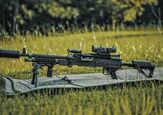
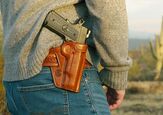
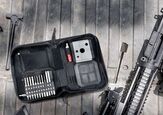



































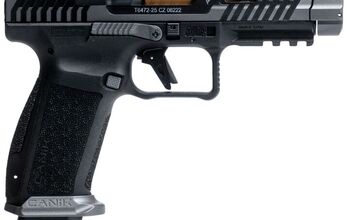

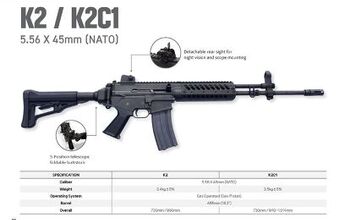
![The NEW Matador Arms Roller-Delayed MAT-9 [GunCon 2025]](https://cdn-fastly.thefirearmblog.com/media/2025/07/04/04302/post.jpg?size=350x220)

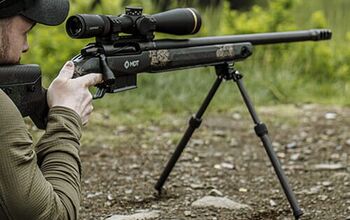
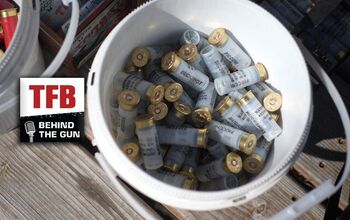




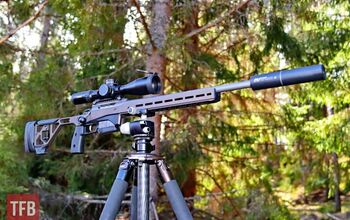



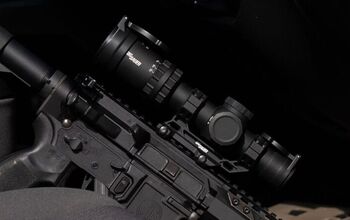
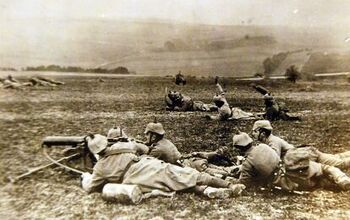

Comments
Join the conversation
No, the Palm pistol made by Consyitutional Arms....for disabled people
Great if I could type better